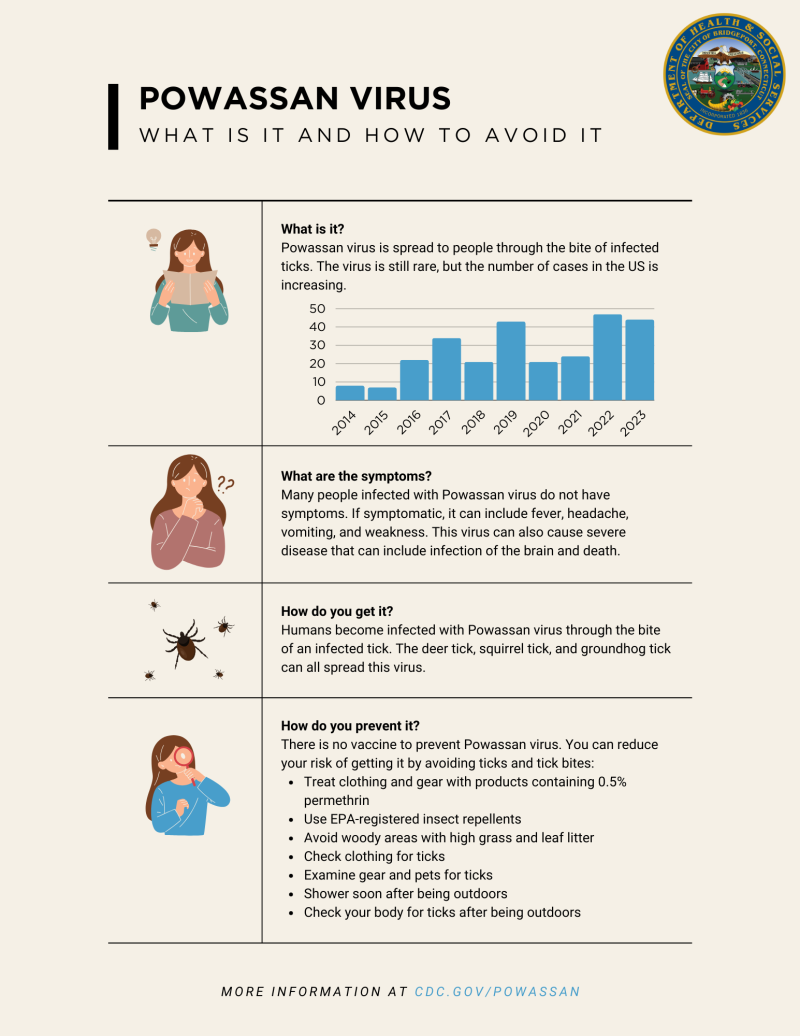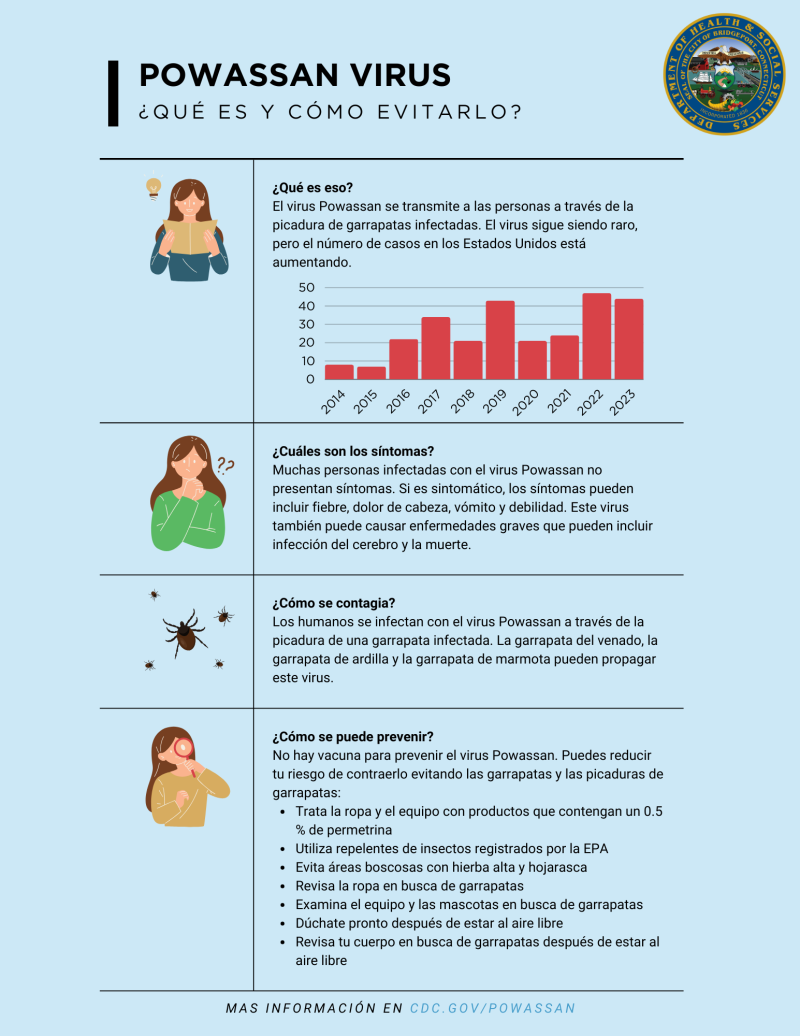Tick-borne Threat: What You Need to Know About Powassan Virus
Powassan virus is spread to people through the bite of infected ticks. The virus is still rare, but the number of cases in the US is increasing. In 2023 there were 44 cases of Powassan virus disease (5 were in Connecticut), compared to only 15 cases in 2013 (none of which were in Connecticut)1.
What is Powassan Virus?
Powassan virus (POWV) is a rare but serious tick-borne virus that can cause severe neurological illness in humans. It is named after the town of Powassan, Ontario, where it was first identified in 19582. Powassan virus is primarily spread to humans through the bite of infected ticks. The main vectors are: Ixodes scapularis (black-legged or deer tick) and Ixodes cookei (groundhog tick). These ticks typically become infected by feeding on small mammals that harbor the virus, such as rodents. Unlike other tick-borne pathogens, Powassan virus can be transmitted relatively quickly, often within 15 minutes of a tick bite.
Symptoms of Powassan Virus
The symptoms of Powassan virus can vary, ranging from mild to severe, and they typically appear within 1 week to 1 month after the bite of an infected tick. Key symptoms include:
Initial Symptoms:
- Fever
- Headache
- Vomiting
- Weakness
Severe Symptoms:
- Encephalitis (inflammation of the brain)
- Meningitis (inflammation of the membranes surrounding the brain and spinal cord)
- Confusion
- Loss of coordination
- Speech difficulties
- Seizures
In severe cases, Powassan virus can cause long-term neurological problems or even be fatal. Approximately 10% of cases with severe illness are fatal, and around 50% of survivors of severe illness experience long-term neurological symptoms.
Prevention of Powassan Virus
There is no specific treatment or vaccine for Powassan virus, so prevention focuses on avoiding tick bites. Key preventive measures include:
Avoid Tick-Infested Areas:
- Be cautious in areas with high grass, brush, and wooded environments, particularly in regions where Powassan virus is known to occur.
Use Tick Repellents:
- Apply insect repellent containing DEET, picaridin, or IR3535 on skin and clothing.
- Treat clothing and gear with products containing 0.5% permethrin.
- ALWAYS FOLLOW THE DIRECTIONS INDICATED ON INSECT REPELLANT
Wear Protective Clothing:
- Wear long-sleeved shirts, long pants, and tuck pants into socks or boots.
- Light-colored clothing can make it easier to spot ticks.
Perform Tick Checks:
- Check your body for ticks after being outdoors. Pay attention to underarms, in and around ears, inside the belly button, behind knees, between legs, around the waist, and in hair.
- Bathe or shower within two hours of coming indoors to wash off and more easily find ticks.
Tick-Proof Your Yard:
- Keep lawns mowed, remove leaf litter, and create a barrier of wood chips or gravel between lawns and wooded areas.
Prompt Tick Removal:
- Remove ticks as soon as possible using fine-tipped tweezers. Grasp the tick close to the skin's surface and pull upward with steady, even pressure. Clean the bite area and your hands with rubbing alcohol or soap and water.
By taking these precautions, you can reduce the risk of Powassan virus and other tick-borne diseases. If you develop symptoms after a tick bite, seek medical attention promptly. Early diagnosis and supportive care are essential for managing severe cases.
More Information
Sources
-
CDC. About Powassan. Powassan Virus. Published May 20, 2024. Accessed May 30, 2024. https://www.cdc.gov/powassan/about/index.html
-
Kakoullis L, Vaz VR, Kaur D, et al. Powassan Virus Infections: A Systematic Review of Published Cases. TropicalMed. 2023;8(12):508. doi:10.3390/tropicalmed8120508



